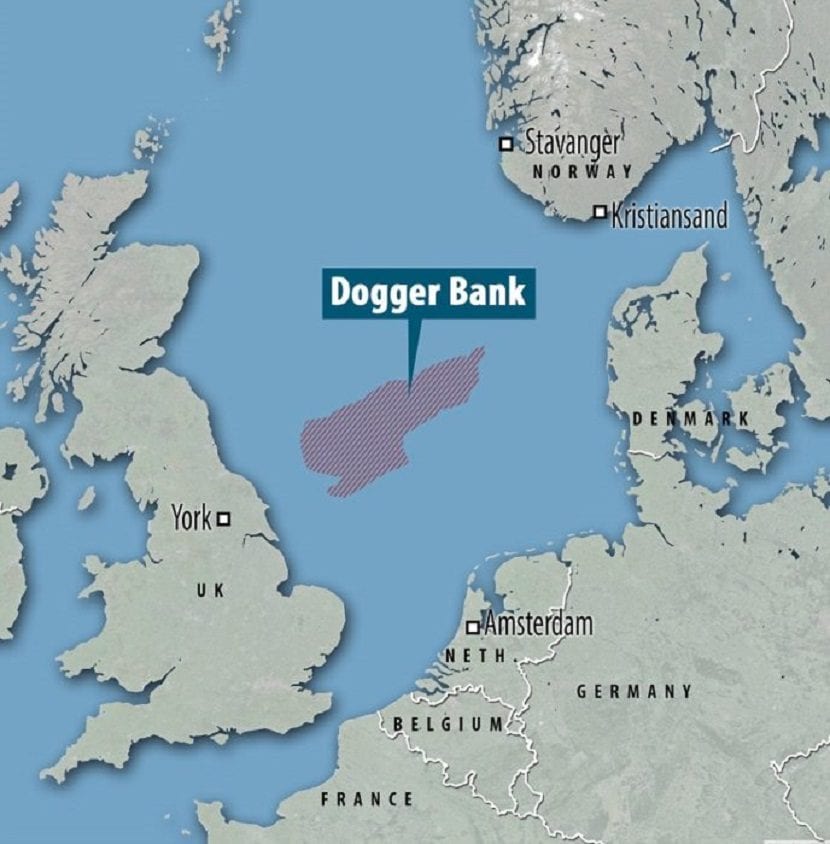
It sounds like science fiction, but yes, the Dogger Island project is real: An artificial island in the North Sea, but what for?
Dogger island has a clear goal: it could supply renewable energy to 80 million people in Europe in 2050.
Europe plans to build an artificial island (Dogger Island), with a port and an airport, designed to act as a hub for large offshore wind farms that will supply 80 million people with renewable energy.
The 6,5-square-kilometer island would collect energy from thousands of new wind turbines who want to install offshore.
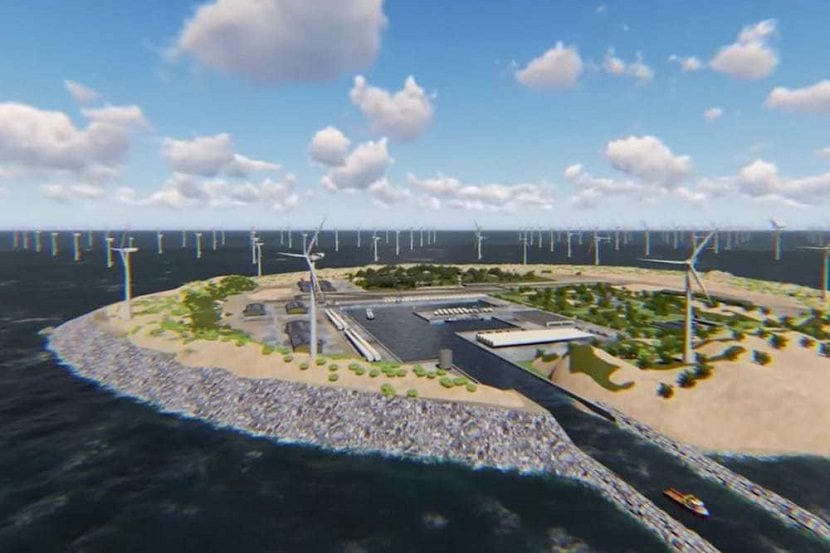
Germany is working with the Netherlands y Denmark to plan and build the new island that will supply energy to the northwestern countries of Europe.
The island would be connected to the United Kingdom, Norway, Netherlands, Germany, Denmark y Belgium, and would build on Dogger Island in the North Sea.
The island is expected to have solar plants to generate maximum power. It will also have a port and landing strip for facilitate access.
Reports indicate that the project will be complicatedFor example, the construction of the foundations of the artificial island will cost around 1,35 billion euros, according to the first estimates.
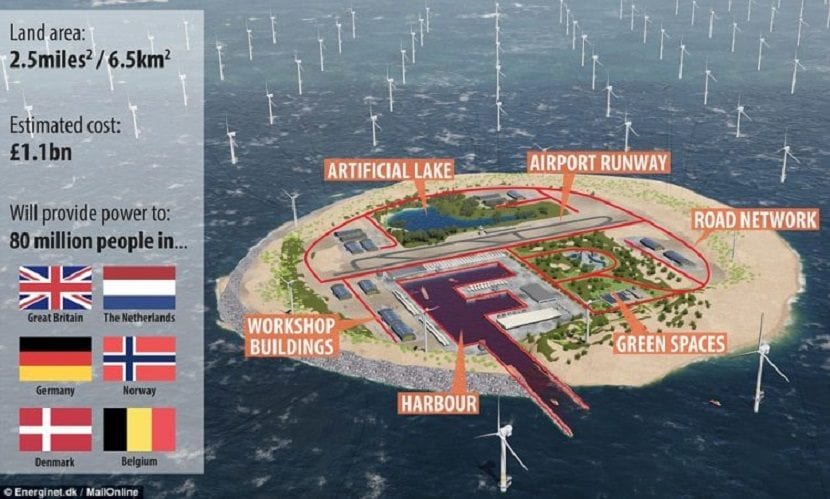
A project that seems a bit crazy but, if carried out, could cheapen wind energy produced offshore.
The North Sea has a higher and more stable wind speed than that experienced by onshore wind farms, and solar plants will provide energy without occupying any land space that could be used for housing or agriculture.
The company says the idea for the island came in response to the European Union's need to combat the climate change. Renewable energy will be key to achieving these goals and that both the sun and the wind will be needed to provide constant levels of energy through each season. The summer months will bring more sun, while the colder months will bring more wind.
According to Glar Nilsen, director of the Danish energy company Ererginet: “We who have the responsibility for transporting the electricity generated for offshore wind turbines back to land (Dogger Island) and consumers must constantly push and make sure the price keeps falling. '
The largest offshore wind farm in the world
The largest offshore wind farm is on the Kent coast (England). Despite being the largest park, its promoters plan to increase its power up to 870 MW in a second phase pending approval.
After four years of construction and an investment of more than 2.200 million euros, the park is made up of 175 Vestas SWT wind turbines, These extend out to sea occupying an area of approximately 100 square kilometers at a distance of 20 kilometers from the Kent coast, southeast of England.
An average of 450 kilometers submarine cables and two offshore substations, which centralize the energy generated by the wind turbines before transporting it to the ground inside.
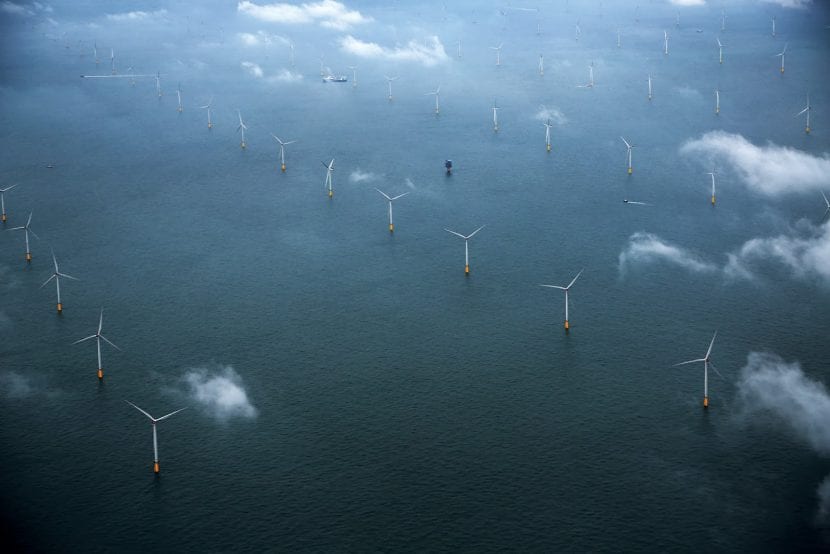
Assembling the wind turbines
For the installation of each wind turbine offshore, it has been necessary to build a regular mesh of piles adapted to the specific characteristics of the seabed, with a depth that varies between 5 and 25 meters depending on the case. These supports allow each of the turbines to be lifted Vestas SWT-3.6MW-120 above the sea level, and on the other hand, act as a foundation to transmit its weight of up to 225 tons to the ground.
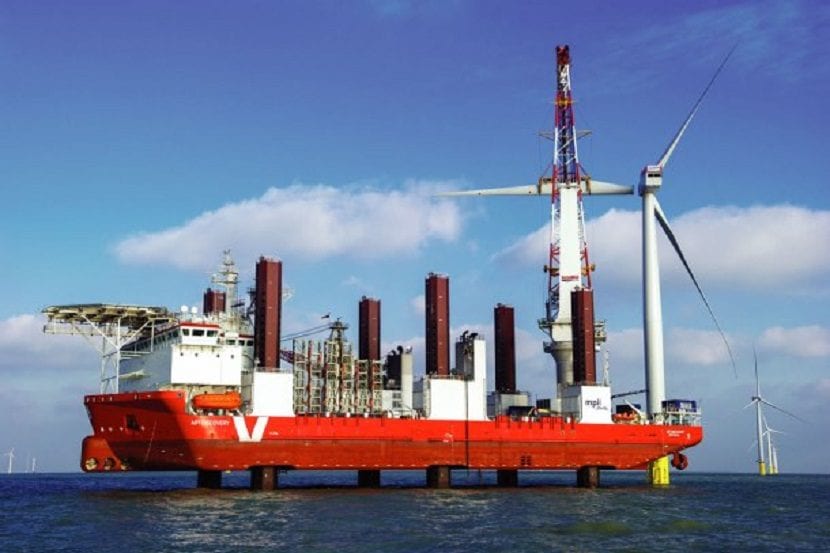
Each of the 175 wind turbines has a height of 147 meters, 90 meters rotor diameter and a blade length of 58,5 meters. For the transport of the energy generated by each of them, there are 210 km of submarine cable that connects each of the turbines with the two offshore substations, and these in turn connect with the substation of Cleve hill on dry land through 4 cables of 150 kV that reach the 220 km of length.
According to the promoters' estimates, in 2012 the offshore wind farm that existed to date supplied about a 1,5% of electricity, but with the London Array this figure is expected to rise above the 5% thus avoiding the emission of 925.000 tons annual CO2.
The recognition of wind energy as one of the least polluting and safe in the European energy scene is beginning to play a relevant role in the production of renewable energy on a global scale. In the case of offshore wind, the energy generated by the turbines has a lesser impact on the the environment, does not require dumping or earthmoving, and being located offshore, it has an impact less aggressive on fauna and vegetation compared to conventional wind.
Future expansion
The London Array has exceeded the expectations of the wind farm in Greater Gabbard, an infrastructure located in the same area that until now held the title of the largest offshore wind farm in the world with an installed capacity of 500 MW. But that is not all.
With the idea of continuing to lead the impressive race in offshore wind undertaken by the United Kingdom, the promoters of the London Array now intend to expand its power from the current 630 MW to the 870. This second phase is pending approval by the various competent authorities, but it would consolidate this wind farm as the largest ever built. In this 2017 we will have the answer?